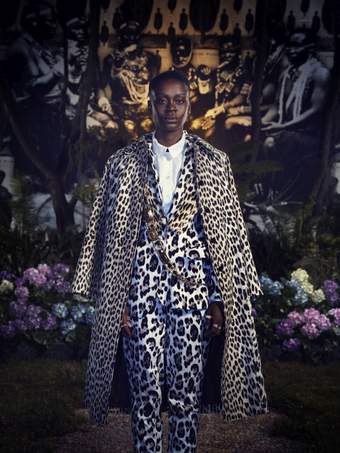
Kudzanai Chiurai, We Live in Silence IV, 2017. Pigment ink on fibre paper, 193.5 x 150 cm. Courtesy the artist and Goodman Gallery

Kudzanai Chiurai, We Live in Silence IV, 2017. Pigment ink on fibre paper, 193.5 x 150 cm. Courtesy the artist and Goodman Gallery
This summer, Tate Modern will launch a major new exhibition celebrating the dynamic landscape of photography across the African continent today. Bringing together 36 artists from different generations and geographies, A World in Common: Contemporary African Photography will explore how photography and video have allowed artists to examine legacies of the past while imagining more hopeful futures. Unfolding across seven thematic sections, the exhibition highlights contemporary perspectives on cultural heritage, spirituality, urbanisation and climate change, revealing shared artistic visions that reclaim Africa’s histories and reimagine its place in the world.
Since the invention of photography in the 19th century, Africa has been broadly defined by Western images of its cultures and traditions. During the colonial period, photography was used as a tool to construct the representation of African societies through a Eurocentric lens. Challenging these dominant images of the continent, A World in Common features around 100 works that illuminate how photography can imagine alternative visions of Africa’s many histories, cultures and identities. Regal portraits of kings and queens join intimate scenes of family life, fading archival postcards of vanishing cities, and stark documentary images of post-industrial ruin. Family photo albums and stylishly composed studio portraits reflect the shared sense of community and belonging that connects Africa and its global diaspora, while scenes of devastated coastlines and otherworldly landscapes consider the growing impact of the climate emergency on the world we inhabit. Guiding viewers along many landscapes, borders, and time zones, the exhibition showcases how photography allows the past and future to co-exist in powerful and unexpected ways.
For centuries before the colonial period, many African societies were governed as kingdoms where ancient dynasties held an important role in the shaping of spiritual and cultural identity. Interweaving historical narratives with imagined scenes of Africa’s regal past, artists George Osodi, Zohra Opoku and Kudzanai Chiurai explore histories of anticolonial resistance and political revolt. The power of ritual plays an important role in many African religions and spiritual practices. For artists Khadija Saye, Rotimi Fani-Kayode, Maïmouna Guerresi and Em'kal Eyongakpa these rites of passage and acts of remembrance offer portals between the living and their ancestors. Shape shifting between the spiritual and physical world, West African masquerade has traditionally been used to embody spirits during performances and ceremonies. In photographic works by Leonce Raphael Agbodjélou, Edson Chagas, Wura-Natasha Ogunji, Zina Saro-Wiwa, it becomes a powerful medium for the activation of cultural memory and collective identity.
The exhibition will explore the rise of studio photography across the continent during the 1950s and 60s – a time when many African nations gained independence. Working within their local communities, pioneering photographers such as James Barnor in Ghana and Lazhar Mansouri in Algeria, photographed families and individuals who would gather proudly to have their portraits taken, often for the first time. Further enhancing this rich history of self-expression and representation, artists such as Lebohang Kganye, Atong Atem, Sabelo Mlangeni, and Ruth Ossai consider the contemporary relevance of family portraiture as a space of kinship and connection.
The legacy of postcolonial utopias continues to inspire artists to confront present-day landscapes at a time when Africa’s place in the world has never been more vital. The stark realities of globalisation and inequality are made visible as artists contemplate the impact of climate change and urbanisation on local communities. The work of François-Xavier Gbré, Andrew Esiebo and Kiluanji Kia Henda documents the expansion and transformation of urban cityscapes while Mário Macilau, Fabrice Monteiro, Aida Muluneh, and Julianknxx explore themes of migration and climate activism in ways that empower the viewer to imagine new and more hopeful futures.